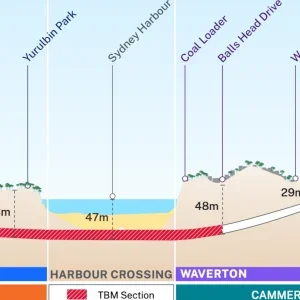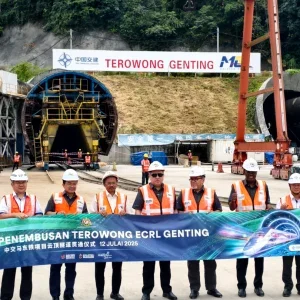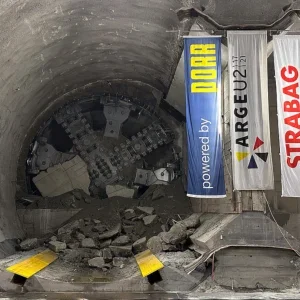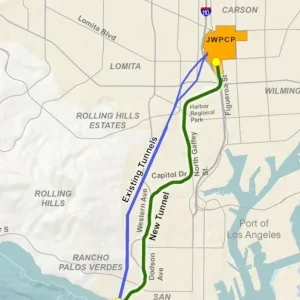Interested parties had until 25 August to register an interest in bidding for the US$294M Brighton and Hove Wastewater Treatment Project that includes 11km of tunnel along the seafront and 2.5km of sea outfall.
The future client, Southern Water, aims to upgrade the current system of local sewers that date from Victorian times and a basic wastewater treatment and screening plant with a new wastewater treatment works (WTW) and sludge recycling centre (SRC) at Peacehaven. A new 2.4m diameter underground sewer will be bored 11km between Black Rock and Peacehaven to transfer wastewater to the new works. Underground pumping stations (PS) will be constructed at Marine Drive and Portobello WTW, together with ten new shafts along the route.
Excavated by TBM at depths between 7m and 45m below ground, the tunnels would be built in four distinct phases from Ovingdean and Peacehaven: Ovingdean shaft to Portobello PS; Ovingdean shaft to Marine Drive PS; new Peacehaven WTW to Portobello PS; new Peacehaven WTW to Friars’ Bay. T&TI obtained a document that indicates multiple TBMs would be used on the project, working at a rate of 20m advance per day on a 24 hour working basis. Southern Water stated that 24 hour working was considered best practice and would minimise the risk of machines becoming stuck if they were frequently stopped. It said it is “confident there will be no material impact on buildings or other structures”.
The Marine Drive PS will be housed in a 44m deep, 17.5m diameter shaft, on a traffic island of the A259 trunk road. It would pump wastewater along a 6km long section of the new tunnel from Brighton and Hove to Portobello. At Portobello, the PS would be constructed in a 27m deep, 17.5m diameter shaft, on land within an existing treatment works. The ten shafts along the route are for construction access and to intercept flows or transfer wastewater when operational. These will vary between 8m and 3m in diameter and be sunk to depths between 9.5m and 39m deep depending upon the location.
At Friars’ Bay there will be a 39m deep, 8m diameter shaft as part of the transfer tunnel works. In addition, a 12m deep, 6.5m diameter shaft will also be required as a service shaft during construction of the 2.5km long sea outfall. Part of the outfall will be tunnelled offshore beneath the wave-cut chalk platform and the remainder will be laid as pipe in a dredged trench.
Southern Water is currently awaiting a decision on the necessary planning permissions and consents. With construction planned to take between three and four years, the earliest estimate for it to enter operational service is 2009.







